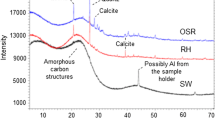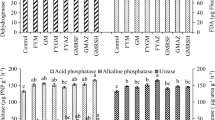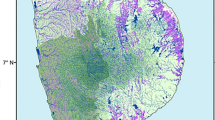Summary
Poor or lack of response of lowland rice to P fertilization is a well-known fact. Several studies were conducted in this direction however, our understanding regarding the underlying mechanism has been far from clear. A remarkable influence of rice plants on P transformation in submerged soil is identified in this experiment which may shed light on this problem. Accordingly, in presence of rice plants P was mobilized during the initial growing period followed by immobilization. The increased microbial activity in presence of physiologically active roots was responsible for P mobilization, while capacity of rice plants to reoxidize the rhizosphere, by secretion of oxygen from roots, during later growing period was responsible for P immobilization.
The extent of P mobilization decreased while that of immobilization increased with increasing P levels in different soils. At a given P level the ratio of P mobilization to immobilization was higher in a soil where crop growth was better and P uptake was higher as compared to another soil where crop growth was poor with lower P uptake.
Thus, lowland rice plants appear to possess an unique physiological mechanism, to regulate the contrasting changes in P availability in the rhizosphere depending on P requirement by the plants or P availability in soil, which in turn is responsible for the poor or lack of response to P fertilization.
The experiment was conducted in a growth chamber. Two soils with widely varying properties were used.
Similar content being viewed by others
References
Alberda, T. 1953 Growth and root development of lowland rice and its relation to oxygen supply. Plant and Soil5, 1–28.
Alva, A. K. and Bille, S. W. 1980 Plant analysis as a potential tool for the evaluation and control of rice plants. I. Parameter for the stage of development. Trop. Agric. (in press).
Alva, A. K. and Larsen, S., Rice L-values in flooded soils under various levels of nutrients applications. (Under preparation).
Barber, D. A., Ebert, M. and Evans, N. T. S. 1962 The movement of15O through barly and rice plants. J. Exp. Bot.13, 397–403.
Bromfield, S. M. 1960 Some factors affecting the solubility of phosphates during the microbial decomposition of plant material. Aust. J. Agric. Res.,11, 304–316.
Cunningham, R. K. 1964 Cation-anion relationships in crop nutrition. I. Factors affecting cations in Italian rye grass. J. Agric. Sci.63, 97–101.
IRRI (International Rice Research Institute) 1966 Annu. Rep. Los Banos, Philippines.
Ishizuka, Y. 1964 Nutrient uptake at different stages of growth. Quoted from, The mineral nutrition of the rice plant. Proc. Sym. at The International Rice Research Institute, 199–218.
Katznelson, H. and Rouatt, J. W. 1957 Studies on the incidence of certain physiological group of bacteria in the rhizosphere. Can. J. Microbiol.3, 265–269.
Mitsui, S., Kumazawa, K., Yazaki, J., Hirata, H. and Ishizuka, K. 1962 Dynamic aspects of N.P.K. uptake and O2 secretion in relation to the metabolic pathways within the plant roots. Soil Sci. Plant Nutr.8, 25–30.
Paul, H. and Delong, W. H., quoted from Patrick, W. H. and Mahapatra, I. C. 1968 Transformation and availability to rice of nitrogen and phosphorus in waterlogged soils. Adv. Agron.20, 323–376.
Sibbesen, E. 1977 A simple ion-exchange resin procedure for extracting plant-available elements from soil. Plant and Soil46, 665–669.
Singlachar, M. A. and Samaniego, R. 1973 Effect of flooding and cropping on the changes in the inorganic phosphate fractions in some rice soils. Plant and Soil39, 351–359.
Takashi, J. and Murayama, N. 1955 Influence of amount of application of nitrogenous fertilizer upon composition of paddy rice plant. Bull. Nat. Inst. Agric. Sci., Japan, Ser.B., 4, 85–122.
Tanaka, A., Watanabe, N. and Ishizuka, Y. 1969 A critical study of the phosphorus concentration in the soil solution of submerged soils. J. Soil Sci. Manure, Japan40, 406–414.
Trolldenier, G. 1977 Mineral nutrition and reduction processes in the rhizosphere of rice. Plant and Soil47, 193–202.
Yoshida, S., Forno, D. A. and Cock, J. H. 1976 Laboratory manual for physiological studies of rice. The International Rice Research Institute, Philippines.
Author information
Authors and Affiliations
Rights and permissions
About this article
Cite this article
Alva, A.K., Larsen, S. & Bille, S.W. The influence of rhizosphere in rice crop on resin-extractable phosphate in flooded soils at various levels of phosphate applications. Plant Soil 56, 17–25 (1980). https://doi.org/10.1007/BF02197948
Received:
Revised:
Issue Date:
DOI: https://doi.org/10.1007/BF02197948




